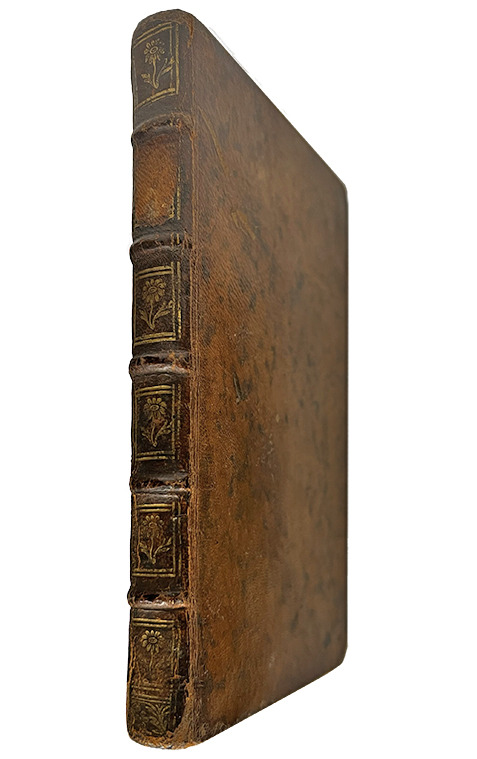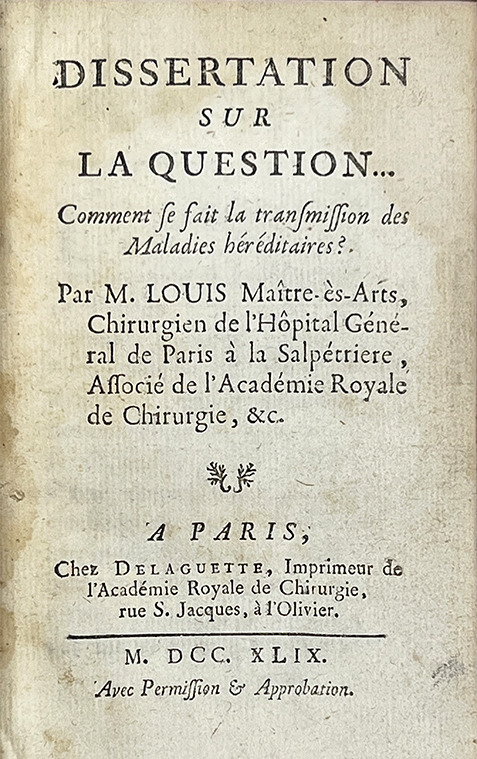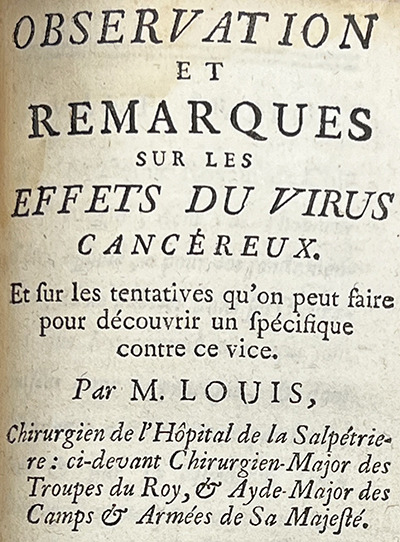#Surgical History
Quote
The first time an electronic medical device was successfully implanted into the human body was 1958. The historic operation was performed by two Swedish surgeons on Arne Larsson, an engineer who went on to live another 43 years – a lifetime of memories and experiences he would never have lived to see had it not been for the hockey-puck-sized computer installed in his abdominal cavity driving his heart to beat normally. Now, nearly 60 years on, the world of medicine has made phenomenal strides in advancing the breadth and capabilities of implantable medical portability, battery life, and efficacy, and today remotely transmit critical information to a patient's doctor over the Internet. The fist Wi-Fi pacemaker in the United States was implanted in the chest of Carol Kasyjanski of Roslyn, New York, in 2009, and when the surgery was complete, her beating heart became the first to join the Internet of Things.
Future Crimes: Inside the Digital Underground and the Battle for Our Connected World
4 notes
·
View notes
Text




Guest Post from John Martin Rare Book Room!
At the Hardin Library of Health Sciences
LOUIS, ANTOINE (1723-1792). Dissertation sur la question--comment se fait la transmission des maladies héréditaires? [Dissertation on the question--how are hereditary diseases transmitted?] and Observation et remarques sur les effets du virus cancéreux [Observation and remarks on the effects of the cancer virus], Printed in Paris at Chez Delaguette, 1749. 17 cm tall.
This month we highlight a book (but two works!) by the 18th-century French surgeon, Antoine Louis, who helped change the perception of surgeons in the medical community. We touch on his works on hereditary diseases and cancer, his little-known connection to the French Revolution and the Reign of Terror, and his role in helping to create the modern surgical profession.
Louis was born to a military surgeon family. His father was a surgeon-major, the senior surgeon of a regiment, at a military hospital. Louis apprenticed under his father and by 1743 had joined another regiment as a surgeon himself. He soon went to Paris, though, to further his education at the Salpêtrière hospital, which you may remember from such JMRBR newsletters as "Volume 2, Issue 4." In 1750 he was appointed professor of physiology, holding that position for 40 years.
Louis was at the head of a movement to push back against the negative perception of surgeons driven by physicians. He wrote often, and effectively, to argue for equal status for surgeons. For centuries surgeons were thought of by physicians as, at best, less educated technicians and, at worst, uneducated boors who would cut anything for money.
Although eventually a separate discipline with its own schools, societies, and formal training, surgery in Europe had its roots in the barber-surgeon tradition. Often employed in the military, barber-surgeons used their tools for surgical and dental procedures as well as for cutting hair.
The 16th-century predecessor of Louis, Ambroise Paré, helped lay the groundwork for the modern evolution of surgery into a medical specialty. He challenged surgical dogma at the time and wrote many works, always in French as he did not know Latin, describing his new techniques and inventions.
Scottish surgeon John Hunter, a contemporary of Louis, established the empirical foundations of modern surgery. Echoing a common theme among early modern medical pioneers, he rejected the status quo and sought to understand surgical knowledge from the ground up. He based his conclusions on his own observations, experiences, and experiments. With his skill as both an experimentalist and writer, Hunter nearly singlehandedly set surgery on the path to its modern place in medicine.
By the 19th century, barber-surgeons ceased to exist and surgeons were well-trained doctors who chose surgery as a specialization.
Louis was not afraid to put his money where his mouth was. Upon the completion of his stint at Salpêtrière, he could have slid right into a position at the college of Surgery, but instead, he wrote and publicly defended his thesis, Positiones anatomicae et chirurgicae(1749). Both of which he accomplished in Latin, thereby demonstrating that surgeons were as liberally educated as their physician colleagues.
While also performing surgeries, writing, and maintaining a busy administrative calendar, Louis found time to invent and improve surgical instruments. His renown eventually led to an association with the most infamous period in French history. A physician opposed to capital punishment petitioned the National Assembly (formed shortly after the French Revolution) to advocate for a more "humane" way to execute criminals.
This would be accomplished by using a machine designed to quickly decapitate them. The Assembly eventually petitioned Louis to design and build it. Originally referred to as the Louisette, it eventually adopted the name synonymous with the Reign of Terror - the Guillotine, named after the physician who originally proposed its use, Joseph-Ignace Guillotin.
Louis wrote and published throughout his life, including several biographies of other surgeons, Encyclopédie entries, and pioneering works on medical jurisprudence. Two boxes of unpublished works were found while cataloging his belongings after his death. The books highlighted here are two of his earlier publications. Observation et remarques sur les effets du virus cancéreux is an interesting piece on cancerous growths and remedies, in which Louis refers to cancer as a virus. We now know of several viruses that can lead to cancer.
Our copy is an adorable little book with beautiful marbled endpapers, a closeup of which you can see above. The contemporary sheepskin cover shows that the book has lived a busy life. It is a deep, rich brown color with several gilt flowers along the spine. The paper is in excellent condition, showing few signs of age or damage.
#medical history#medicine#surgical#french revolution#university of iowa#rare books#jmrbr#hardin library#libraries#antoine louis
60 notes
·
View notes
Photo


Ship's Surgical Kit "U.S.A./ Hosp. Dept.", by Hermann Hernstein 1862-1865
Surgical kits were not required on merchant vessels, but the larger and better-equipped ships often carried them. These were used for everything from pulling teeth to the amputation of limbs, and everything in between. Like the medicine chests, these kits too were often sold with simple pamphlets, with instructions and diagrams on how to use them in emergencies.
94 notes
·
View notes
Text
Follow @uncannyfacts for more! ✨



#creepy#creepy facts#skeleton#skeletons#surgical#medical#surgery#medicine school#doctor sleep#doctors#uncannyfacts#uncannyrajan#factsoftheday#uncannymedia#facts#education#amazing facts#weird facts#true facts#history
34 notes
·
View notes
Text
as a surgeon, it’s always funny to see either of the two popular posts about william halsted that have been going around. no one seems to connect “halsted who invented surgical gloves for his wife” with “halsted who did a lot of cocaine and decided surgical residents should work inhumane hours”
he did in fact invent surgical gloves for one of his nurses, who he later married. in a time when few doctors had embraced the concept of germ theory, he was a great believer in sterility and cleanliness in his operating room, and the chemicals he used as disinfectants (like carbolic acid) were not very gentle on the skin. when he worked at bellevue hospital in new york, he had a tent constructed on the lawn because he didn’t want to share OR space with surgeons who didn’t wash their hands or their instruments
he was also addicted to cocaine, an addiction that started when german scientists suggested it could be used as a local anesthetic. he felt it was his duty to try the drug before giving it to anyone else. he also believed that residents could only achieve adequate training by working basically all the time, and, well, cocaine is certainly one way to keep yourself awake
#medblr#william halsted#medical history#he was a super interesting guy#and there’s a reason we still get pimped on his surgical principles
82 notes
·
View notes
Text
not me rediscovering a post from seven years ago on this blog when i first posted about getting accepted to the university of edinburgh for undergrad and getting really emo about it
#( * ooc. )#i've been so down on myself lately but just!!#i'm doing a phd now holy shit i can't believe things have come this far#i'm not even in literature anymore my phd is in history but coming to this university and this city led me to that#every time i pass the plaque for robert louis stevenson on the corner of drummond street i reach up to pat it because#he brought me here#this little novella is what drove me to study here and even though i've pivoted from scottish literature to surgical history i just#would never have gotten to that point without stevenson#i'm crying in the club tonight
8 notes
·
View notes
Photo

A gloved hand making surgical stitches. Colored pencil drawing, 1900 - 1999
#science#medicine#medblr#academia#history#Illustration#medical illustration#surgical knot#hand tinted#surgical stitches
271 notes
·
View notes
Text

CRYING AND SCREAMING AND WAILING AND SWOONING
#( * ooc. )#GUYS#I\M GONNA BE A MEDICAL HISTORIAN#IM GONNA BE A LECTURER IM GONNA HAVE A CAREER IN THIS DUMB SURGICAL HISTORY OBSESSION#IM GONNA GO TO DUBLIN AND SEE ARCHAELOGICAL EXCAVATIONS AND GO TO PARIS TO SEE THEIR ARCHIVES AND!!!!!!!!!#HYPERVENTILATES INTO A PAPER BAG
21 notes
·
View notes
Text

i’m saving this for posterity in the off chance she ever tries to take it back later.
#ALSO i woke up this am with 4 starters. three meme replies. and 7 drafts already written in my head#now i have seven tabs open - three are replies. two are still tumblr related. one is the history of surgical amputation#and the other is say yes to the dress clips on yt#wtf is going on with my focus. this is why i can't get anything done
7 notes
·
View notes
Text

!!!!!! thank u all lads 😭
9 notes
·
View notes
Text

~ Portrait of a Youth with a Surgical Cut in one Eye.
Period: Roman Period
Date: A.D. 190–210
Place of origin: Egypt
Medium: Encaustic paint on limewood
#ancient#ancient art#history#museum#archaeology#painting#portrait#portrait of a youth#surgical cut#egyptian#egypt#roman period#2nd century#3rd century#a.d. 190#a.d. 210
255 notes
·
View notes
Video
youtube
గుడి శిల్పాలలో దాగి ఉన్న ఇండియన్ advanced surgical technology -హళేబీడు హొయసలేశ్వర గుడి
hey guys , ఇది hoysaleswara గుడి ఇంకా ఇక్కడ మీరు చాలా విచిత్రమైన శిల్పం చూడవచ్చు, ఇక్కడ చూస్తున్న ఈ శిల్పం ప్రాచీన ఈజిప్టియుడు. ఈయన వేసుకున్న బట్టలు ఇంకా ఈయన దగ్గర ఉన్న వస్తువులు ఇవన్నీ చూస్తుంటే ఈ గుడిలో ఉన్న అన్ని శిల్పాల కంటే ఇది చాల విచిత్రంగా ఉంది. In fact చాలా మంది historians , ఇది ఒక egyptian శిల్పం అని ఒప్పుకుంటున్నారు., అయితే ఇది పూర్తిగా వేరొక ఖండంలో ఉన్న india లో ఎలా చెక్కబడిందని ఎవరికి తెలియదు. ఈ గుడిని సుమారు 900 సంవత్సరాల ముందు కట్టబడిందని Archeologists చెప్తున్నారు, అయితే ఇది కొన్ని వెయ్యి సంవత్సరాలుగా ఇక్కడే ఉందని స్థానికులు చెబుతున్నారు. ఈ గుడిలో ఉన్న అన్ని శిల్పాలతో పోలిస్తే అంటే దేవుళ్ళ , మనుషుల శిల్పతో compare చేసి చూస్తే, చాలా విచిత్రమైన features ఉన్నట్టుగా ఉంది.
ఇక్కడ ఉన్న అన్ని indian శిల్పాలకు, శరీరం పైభాగంలో ఎటువంటి dress లేకుండా ఉంది, కానీ వాటికి చాలా నగలు ధరించి ఉన్నాయి ఈ శిల్పం పూర్తిగా opposite గా ఉంది, ఇది పొడవాటి కోటు వేసుకున్నట్టు చెక్కారు కానీ ఈ శిల్పానికి నగలు లేవు. Mostly ఇక్కడ ఉన్న indian శిల్పాలకు చెప్పులు ఉన్నాయి అయితే ఈ శిల్పం వట్టి కళ్ళతో ఉంది. పాత కాలపు egyptians paintingలలో ,శిల్పాలలో ఎలా ఉంటారో అదేలాగ ఉంది. ఇప్పుడు, మీరు ఈ Egyptian బొమ్మను చుడండి, ఈ పొడుగ్గా ఉన్న coat కింద, ఇతను నడుము పట్టి వేస్కున్నట్టుగ ఉంది, Exact గ ఈ శిల్పం కూడా అదే విధంగా ఉన్నట్టు తెలుస్తుంది. ఆ నడుము పట్టి ఈ పొడుగ్గా ఉన్న coat కింద ఉంది. ఇప్పుడు ఈ శిల్పాన్ని కొంచం గమనించి చూస్తే ఈయన బుజాల వరకు ఉన్న ఒక తల కవచం పెట్టుకున్నట్టు మనకు కనిపిస్తుంది. ఇది ఒక తల కవచం అని బాగా తెలుసు, అయితే ఆయన నిజమైన వెంట్రుకులు దాని కింద తెలుస్తుంది. ఇంకా ఈ తల కవచం చూడడానికి పురాతన Egyptian ల కవచం లాగానే కనిపిస్తుంది.
అయితే ఇదే గుడిలో చూస్తే, ఇక్కడ ఉన్న అన్నీ indian శిల్పాల hairstyle చూస్తే complete గ different గుంది. అన్నీ history books లలో మన పాతకాలపు india కి పాతకాలపు egyptian తో connection లేదని చెప్తున్నారు. అయినప్పటికీ ఈ గుడిలో Egyptian వ్యక్తి శిల్పం ఉంది. అది ఎలా సాధ్యం? బాగా గుర్తుంచుకోండి, historians and archeologists ఏమంటున్నారంటే, మన పాతకాలపు india ని పక్కన పెట్టేశారని చెప్తున్నారు, ఇంకా వేరే దేశాలతో connection లో లేదని చెప్తున్నారు. అయినప్పటికీ, నేను ఇంకొక video లో పురాతన బృహదీశ్వరాలయంలో చెక్కిన ఒక వ్యక్తిని మీకు already చూపించాను.
అన్నీ historians చెప్పేదేందంటే, India Africa తో connection లో లేదని చెప్పడమే. అయినప్పటికీ నేను మీకు konark సూర్యని గుడిలో చెక్కిన Giraffe ని చూపించాను. ఇంకా giraffe లు south africa లో మాత్రమే కనిపిస్తాయి. ఇన్ని evidence లు చూస్తుంటే , ఇప్పుడు మనమందరం ఎలా connect అయ్యామో అలాగే ప్రపంచంలో ఉన్న అన్నీ పురాతన నాగరికతలు ఏకమై ఉండి ఉంటాయా? వాళ్లంతా telescope లు లాంటి advanced technology ని ఇంకా communication device లను use చేస్తూ ఉండేవాళ్లా? ఈ Egyptian శిల్పానైనా, ప్రాచీన indian గుళ్ళలో కనిపించే ఇతర శిల్పానైనా మనం ఎలా explain చేయగలం? కానీ అతి ముఖ్యమైన ప్రశ్న ఏమిటంటే, ఎందుకు ఈ Egyptians లు మన india కి వచ్చారు? వాళ్ళు ఇక్కడికి రావడానికి అవసరం ఏమిటి? ఈ ప్రశ్నకి సామాధానం తెలుసుకోవడానికి ఈ egyptian గురించి ఇంకా ఏమైనా శిల్పాలను చెక్కి ఉన్నారా అని ఇక్కడ ఉన్న వెయ్యి శిల్పాలను నేను చూడడం ప్రారంభించాను. ఇక్కడ రెండు చిన్న శిల్పాలు ఉన్నాయి చుడండి, ఈ రెండు ఒకరినే చూపిస్తుంది. ఇక్కడ ఈయన Indian musiciansని and dancers ని చూస్తున్నట్టుగ ఉంది, దీనిబట్టి మనకు ఏం తెలుస్తుందంటే ఈయన రాజకుటుంబానికి చెందిన వారై యుండొచ్చు, ఇవన్నీ ఈయన entertainment కోసం చేసినవిగా ఉండొచ్చు.
కానీ ఇక్కడ ఇంకొక శిల్పం ఉంది ఇది చాల విచిత్రంగా ఉంది. left side lo ఒక Indian వ్యక్తి తన ఒడిలో ఒక బిడ్డ ఉన్నట్టు మనకు తెలుస్తుంది. ఇందులో విచిత్రం ఏమిటంటే, ఈ వ్యక్తి ఆ బిడ్డ పైన మనం exercise చేసే dumbbell లాంటి పరికరాన్ని పెట్టినట్టు కనిపిస్తుంది. దీన్ని పక్కన నిలబడి ఉన్న ఒక Egyptian ఈయన చేసే విధానాన్ని గమనిస్తున్నాడు. ఈ dumbbell లాంటి ఒక పరికరాన్ని ఈ పిల్లల ఛాతీకి ఎడమ వైపున, exact గా గుండె పైన పెట్టినట్టు మీరు చూడవచ్చు. ఈ కాలంలో ఉన్నmodern medical technology లో, గత కొన్ని సంవత్సరాలలో cardiopump అనే పరికరాన్ని తయారు చేసారు, ఎవరికైనా cardiac arrest అంటే గుండెపోటు వచ్చినప్పుడు CPR అందించడానికి ఇది use అవుతుంది. దీన్ని correct గ గుండె పైన పెట్టి ఈ విధంగా press చేస్తే రోగిని కాపాడగలం. ఒకవేళ పురాతన కాలంలో చెక్కబడిన ఈ శిల్పం కూడా అదే technology ని చూపిస్తుందా? మన ancient indian గ్రంథాలలో, ఇతర దేశాలలో ఉన్న వాళ్ళు india కి వచ్చి advanced technology ని నేర్చుకున్నారని, ఇంకా main గా medical field గురించి నేర్చుకున్నారని చెప్తున్నారు. నలంద లాంటి పెద్ద పెద్ద universities లు పాత కాలంలో ఉండేవి ఇంకా ఈ కట్టడాల శిధిలాలు నేటికీ దీనిని ధృవీకరించడానికి ఉన్నాయి.
పాతకాలంలో advanced యైన surgery operations ఎలా చేయాలనే దాని గురించి సుశృత, సంహిత అనే పుస్తకాలలో 2700 సంవత్సరాలకు ముందు రాసారు. ఇందులో అనేక రకాల surgical instruments గురించి రాసినట్టు మనకు తెలుస్తుంది. ఇదే లాంటి surgical instruments లను egypt దేశంలో చెక్కిన వాటిని కనిపెట్టారు. Egypt లో చెక్కినవి clear గా చూపిస్తున్నాయి, అంతేకాక archeologists లు metals తో చేసిన కొన్ని surgical instruments కూడా కనిపెట్టారు. ఇంకా వాళ్ళు ,india లో జరిగిన విధంగా Egypt లో కూడా surgery లు జరిగిందని prove చేశారు. So, ఇప్పుడు మీరు ఏం అనుకుంటున్నారు? India కి ఇంకా egypt కి పాత కాలంలో సంబంధం ఉనిందా? వెయ్యి సంవత్సరాలకు ముందు ఒక advanced యైన సమూహం ఒక advanced యైన technology తో ఉనిందా? ఈ రోజుల్లో మనం connectionలో ఉండే విధంగా అప్పట్లో ఉన్న వాళ్ళు connectionలో ఉండేవాళ్లా? Please మీ thoughts లను comment section లో comment చేయండి. నేను మీ praveen mohan, video చూసినందుకు చాలా thanks , subscribe చేయడం మర్చిపోకండి. ఈ video కి thumbs up ఇవ్వండి ఇంకా మీ friends కి share చేయండి, త్వరలో మళ్ళీ కలుస్తాను.Bye.
#India#incredibleindia#Hoysaleswara Temple#egyptian#carving#advanced surgical technology#Ancient Temple#history#Ancient technology#ancient history#Ancient surgical technology#Praveen Mohan#నిజమైనచరిత్ర praveenmohantelugu ప్రవీణ్_మోహన్
2 notes
·
View notes
Photo

Trepanning instruments, circa 1790
#medicine#medical illustration#medical art#history of medicine#medical history#medical humanities#trepanning#trepannation#trepanation#surgical instruments#surgery#history of surgery#history of medical illustration
467 notes
·
View notes
Text

Surgical instruments of Naval Surgeon William Beatty, ca. 1800
The wooden box containing instruments including a screw tourniquet, an amputation knife with detachable handles, two trephines and forceps. Inset into the box lid, behind a velvet-covered panel, are more instruments, including a fine-toothed bow saw, a knife, a hook and forceps.
Beatty was 1805 the Surgeon aboard HMS Victory and took care of Nelson after his deadly injury.
#naval artifacts#naval history#surgeon of hms victory#william beatty#surgical chest#1800#age of sail
46 notes
·
View notes
Photo









A selection of interesting historical medical photos!
Links to:
[x] [x] [x] - [x] [x] [x] - [x] [x] [x]
#medical history#medical aesthetic#history#historical photography#medical horror#medical drawing#black and white#medicalcore#medical photos#medical photography#surgical#surgery#plague doctors#arzt#doktor#interesting#mildly interesting#mildlyinteresting#interesting history#photography#fotografie#medical academia#dark academia#medical#med student#med studyblr#studyblr#history studyblr
206 notes
·
View notes
Text
the hilarity of j*kyll and hyde being what started my academic journey in undergrad and now i’m researching something completely different for my phd but that research heavily involves a particular historical surgeon whose real house was the one stevenson based j*kyll’s house on...... we’ve come full circle baby
#( * ooc. )#I HAVE TO LAUGH#it's good and spicy though there are Themes w how john hunter's house had such a binary split#between the respectable building where he and his wife had high society guests and the separate anatomy theatre where he dissected#public society persona vs private rooms for what society saw as shameful / repulsive#in one hand i am holding j*kyll and hyde analysis and in the other i am holding surgical history analysis FIGHT
7 notes
·
View notes